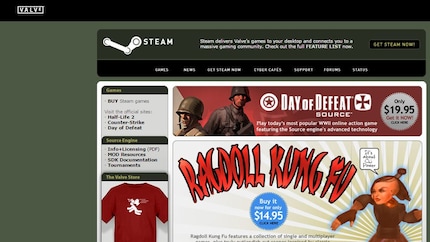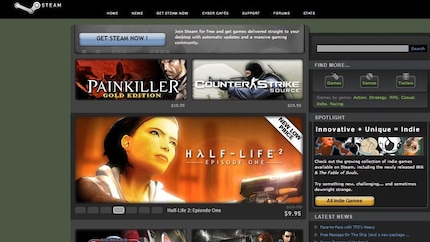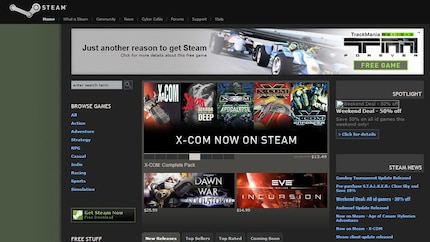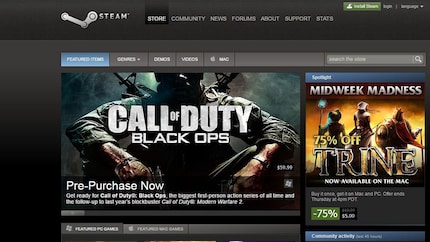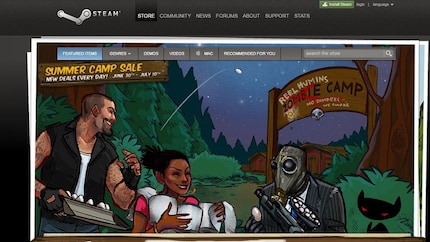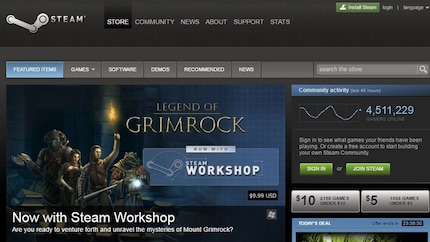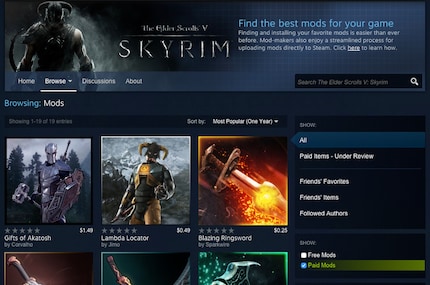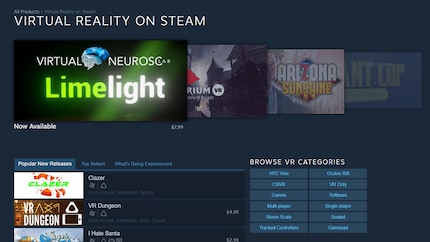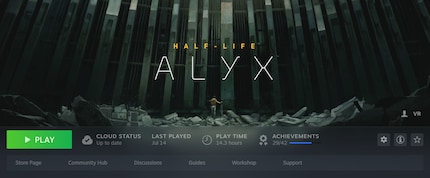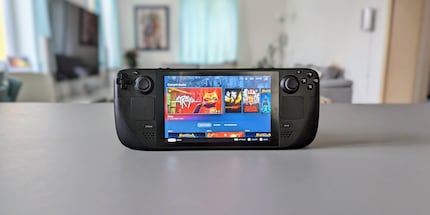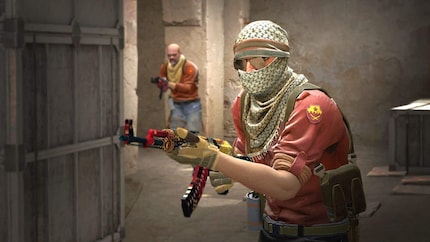
Background information
How an anti-porn campaign is also threatening safe-for-work games on Steam
by Debora Pape

The largest games platform in the world has turned 20. It’s hard to imagine the gaming world without it, although it was anything but popular in the beginning.
March 2004 sees the initial release of Counter-Strike: Condition Zero. Definitely not the best Counter-Strike, but it still has many taking the plunge and installing Steam. The collective jubilation is even louder in November. The eagerly awaited Half-Life 2 is released. It’s the first game that can be purchased digitally via the platform. Discussions about the Steam exclusivity quickly become a sideshow. Gordon Freeman’s second adventure is simply groundbreaking.
The Orange Box is a legendary game bundle. It contains three Valve titles at once, all of which are released in 2007: Portal, Team Fortress 2 and Half-Life 2: Episode 2. Portal begins as a freeware student project. After a Valve employee sees the game, the team is hired immediately.
In December of the same year, the first Steam Sale also takes place. A soon-to-be (costly) tradition
Valve is ahead of the curve in 2008, storing game saves in the cloud. Something that either won’t be standard or hidden behind a paywall by other manufacturers even years later. Cloud Save ensures that you no longer have to copy entire folders of potential saves when reinstalling Windows.
Valve adds a wishlist to Steam, allowing users to be informed when a game releases or goes on sale. For game studios, it’s also an important metric to gauge success or make deals with publishers.
Next to Portal 2, probably the most important event for Steam this year is launching its workshop. It allows players to create content for games and download it directly from Steam. In the same year, Steam Guard with two-factor authentication is introduced to counteract increasing account abuse.
Valve introduces Steam Greenlight in 2012, allowing users to vote for indie games to be published on Steam. The controversial feature will be replaced by Steam Direct in 2017, opening the gates for ever more new games and new problems.
Another addition is the Steam Community Market, where in-game goods like hats or weapon skins can be bought and sold. A business model that’s as lucrative as it is controversial.
The e-sports sensation DotA 2 might be the least significant innovation for most. What’s more exciting is that there are now user reviews in addition to the existing Metacritic scores. Here, users can submit their own ratings.
Another 2013 novelty are Early Access titles, games that can be purchased and played during development. Among them, space travel simulator Kerbal Space Program.
Bethesda, whose games are famous for mods, think it’s a good idea to put price tags on user content that’s been free until now. The backlash was incredible. It doesn’t take long for Bethesda to backpedal and reverse the venture.
2015 also marks Valve’s first venture into hardware. On the one hand, there’s Steam Link. A small device that can stream games from PC to TV. In addition, there’s the Steam controller with its iconic owl eyes as trackpads. The Steam Machines are considerably less successful. An attempt, together with hardware manufacturers like Alienware, to turn PCs into living room consoles. The project fails, but luckily Valve doesn’t give up on the hardware front.
While millions of people are out looking for digital pocket monsters in Pokémon GO, Steam users prefer to put on VR goggles. Together with HTC, Valve launches the HTC Vive and also releases a small game, The Lab.
Half-Life 3 has long since become a running gag. There’s still no sequel to the beloved action-adventure series in 2020. Instead, Half-Life Alyx is a prequel for VR. If you thought headcrabs were creepy before, you haven’t experienced them in virtual reality.
Valve surprises once again with an unusual hardware project. The Steam Deck is a handheld PC in the style of a Nintendo Switch. Theoretically, all Steam games can be played on it from the couch or on the go. Scepticism is high at first, but other manufacturers soon jump on the bandwagon. Handheld PCs are here to stay.
23 years after the first part, the official successor to Counter-Strike will be released in 2023. So far, the multiplayer shooter is still in a closed beta phase, but the official launch is expected soon.
From a small program that was forced upon players, an unforgettable platform has developed. Over 120 million people log in every month to play one of the more than 50,000 games available. Today, people complain unendingly when a game doesn’t appear on Steam. Among many controversial decisions, Valve has undoubtedly created a place that’s more than a store. It’ll be interesting to see where it goes next.
What else awaits? There are still a few months left in the year. What do you wish for Steam’s 20th birthday?
As a child, I wasn't allowed to have any consoles. It was only with the arrival of the family's 486 PC that the magical world of gaming opened up to me. Today, I'm overcompensating accordingly. Only a lack of time and money prevents me from trying out every game there is and decorating my shelf with rare retro consoles.
Interesting facts about products, behind-the-scenes looks at manufacturers and deep-dives on interesting people.
Show all
Background information
by Debora Pape

Background information
by Philipp Rüegg

Background information
by Debora Pape
Arnold Schwarzenegger becomes governor of California, MySpace sees the light of day, and an unassuming digital platform called Steam is released. Until 2003, Valve is primarily known for Half-Life. With Steam, the game studio wants to simplify the game update process. Buying games isn’t possible at first and only Valve games are available. The response is anything but positive. Gamers criticise the online-only constraint at a time when broadband internet is far from standard. And the platform is still very unstable. Suddenly losing access to your games is a very real possibility. Nevertheless, millions of people install Steam a year later. The reason? Half-Life 2.
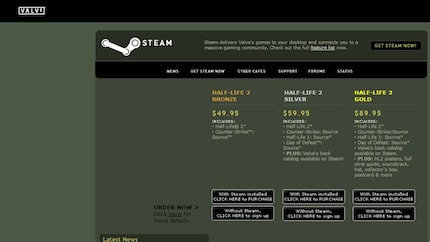
Even in 2005, games on Steam can be counted on one hand. The first non-Valve game is called Rag Doll Kung Fu. It’s an entertaining brawler that comes bundled with a low-budget kung fu movie. One of the brains behind it is Mark Healey, who works for Lionhead Studios. One of its members includes developer legend Peter Molyneux, who created Black & White and Fable among others. Healey later founded Media Molecule with two other Lionhead developers, who are also responsible for some major games like Little Big Planet and Dreams.
